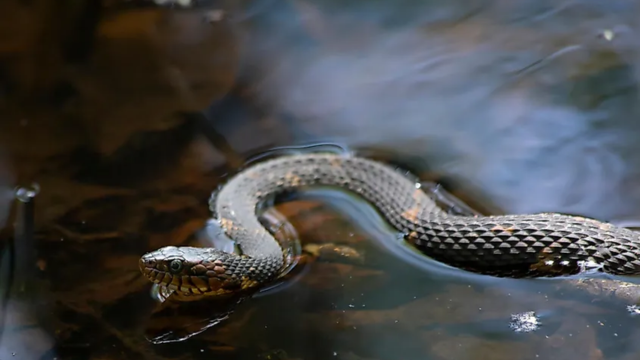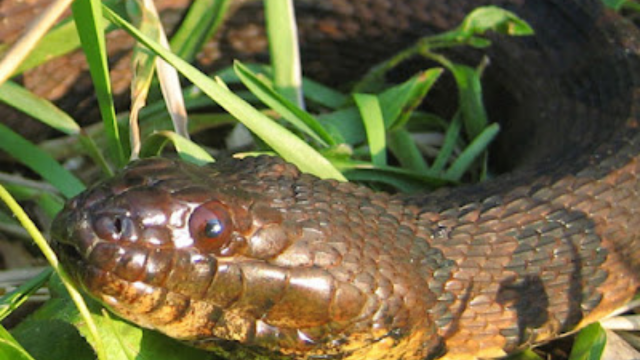It’s possible that the most well-known characteristic of the Beaver State is its large, toothy rodents, although snakes are also rather common there. Other iconic creatures from the Pacific Northwest are also found there. Actually, there are fifteen distinct species of serpents that can be found in the state of Oregon.
There are a number of semi-aquatic species that tend to congregate in and around significant amounts of water, despite the fact that none of the water snakes make it onto our list. I will provide a brief summary of the lakes in the state that are the most inhabited by snakes.
The purpose of this event is not to inspire ophidiophobia, which is the fear of snakes, but rather to pay tribute to certain individuals who are overlooked in Oregon’s different ecosystems.
It is Lake Billy Chinook.
While we are on the subject of rattlers, let us move on to Lake Billy Chinook, which is located in the middle of Oregon and is thought to be the habitat of an imposter snake.
In spite of the fact that it does not possess any poisonous properties, the gopher snake, also known as the bull snake (Pituophis catenifer), demonstrates a remarkable ability to impersonate its more dangerous counterpart.
Both the gopher snake’s coloring (dark blotches over tan skin) and its defensive behavior (flattening of the head, coiling, shaking of the tail, and striking) have the potential to occasionally startle visitors to The Cove Palisades State Park, which is situated on the southeast side of the reservoir and is also only forty miles north of Bend, Oregon.
Before we go, it is important to bring up the North American racer, which is also referred to as the racer (Coluber constrictor). This particular serpent is another remarkable species that can be found in the vicinity of the lake and state park.
It is highly unlikely that this slim and quick snake will go swimming with summer tourists because it often prefers habitats that are warm, dry, open, or with bushy vegetation.
Lake of Craters

A massive volcanic eruption led to the fall of one of the peaks in the Cascade Mountain Range 7,700 years ago, which resulted in the formation of this mountain range.
The beautiful blue waters are home to an estimated 19 native reptile species, including three of Oregon’s four species of garter snakes. In addition to the hundreds of thousands of visitors that come each year to take pictures of the mountains reflected off the water and stroll the neighboring trails, the waters are also home to the garter snakes.
As a result of the significant amount of variation that exists among species, the National Park Service asserts that genetic study is necessary in order to differentiate between the many species.
Melanism, for instance, is responsible for the fact that they can periodically seem completely black on Wizard Island, which is located in the middle of the west side of Crater Lake.
Regardless of the species or subspecies, the garter consumes a significant amount of amphibians and insects as its primary sources of nutrition. On the other hand, if they are having a very bold moment, they might even capture a baby bird or a mammal when the opportunity presents itself.
The snakes that live in Crater Lake do not want to engage with people in any way, regardless of their appearance (whether they are bright, striped, or dark). As a result, those who are considering hikes or swimming in the lake should not be concerned about their safety.
Lake of Wallowa
In addition to being located within Wallowa County and the Wallowa-Whitman National Forest, this small ribbon lake serves as the focal point of Wallowa State Park. It is encircled by the breathtaking Wallowa Mountains.
Although they are superb swimmers, Western rattlesnakes typically hibernate in winter dens that face south or sleep low beneath rocks or fallen logs even though they are excellent swimmers.
There are a number of distinguishing characteristics of this species, including its large, triangular head, vertical pupils, and peculiar rattle, which vibrates as a warning when it is threatened.
Western rattlers normally range in length from 18 to 36 inches, despite the fact that their color patterns change considerably according on the habitat in which they are found.
In Wallowa County, the Northern Pacific rattlesnake has been known to bite a number of animals, although it is extremely rare for it to experience any negative interactions with humans.
To our good fortune, both dogs and cats typically recover from injuries very rapidly; nonetheless, it is still recommended to keep a close eye on them (or to keep them on a leash) and to get medical attention in the event that they are injured.
Lake of Waldo

The northern rubber boa, also referred to as the rubber boa (Charina bottae), and the common garter (Thamnophis sirtalis) are two of the most significant snakes that can be found in the Waldo Lake and Waldo Lake Wilderness areas.
The presence of such pure settings is extremely beneficial to all living things, including snakes. The common garter snake is the most common species of snake found in Oregon. It is possible to introduce this snake into stores in coastal areas just as easily as it can be introduced into mountain woods.
In the vicinity of Waldo Lake, the subspecies of the valley garter snake, also known as T. s. fitchi, is the one that is most likely to be observed. In spite of the fact that it is less common than the ordinary garter snake, the rubber boa has one of the most extensive ranges in the present state.
This results in a contradictory situation due to the fact that it belongs to the same family as the anaconda and the boa constrictor, which are the two largest snakes in the world.
As a conclusion
Snakes and lakes may appear to be a weird combination at first look; nevertheless, this combination makes perfect sense when one considers the abundant supply of freshwater, the vegetation that is found in the surrounding area, and the scattered areas for sunbathing.
There are fifteen different species of native snakes in Oregon, and several of them are semi-aquatic. This means that they are just as comfortable on the surface as they are in the brush that surrounds them when the situation calls for it.